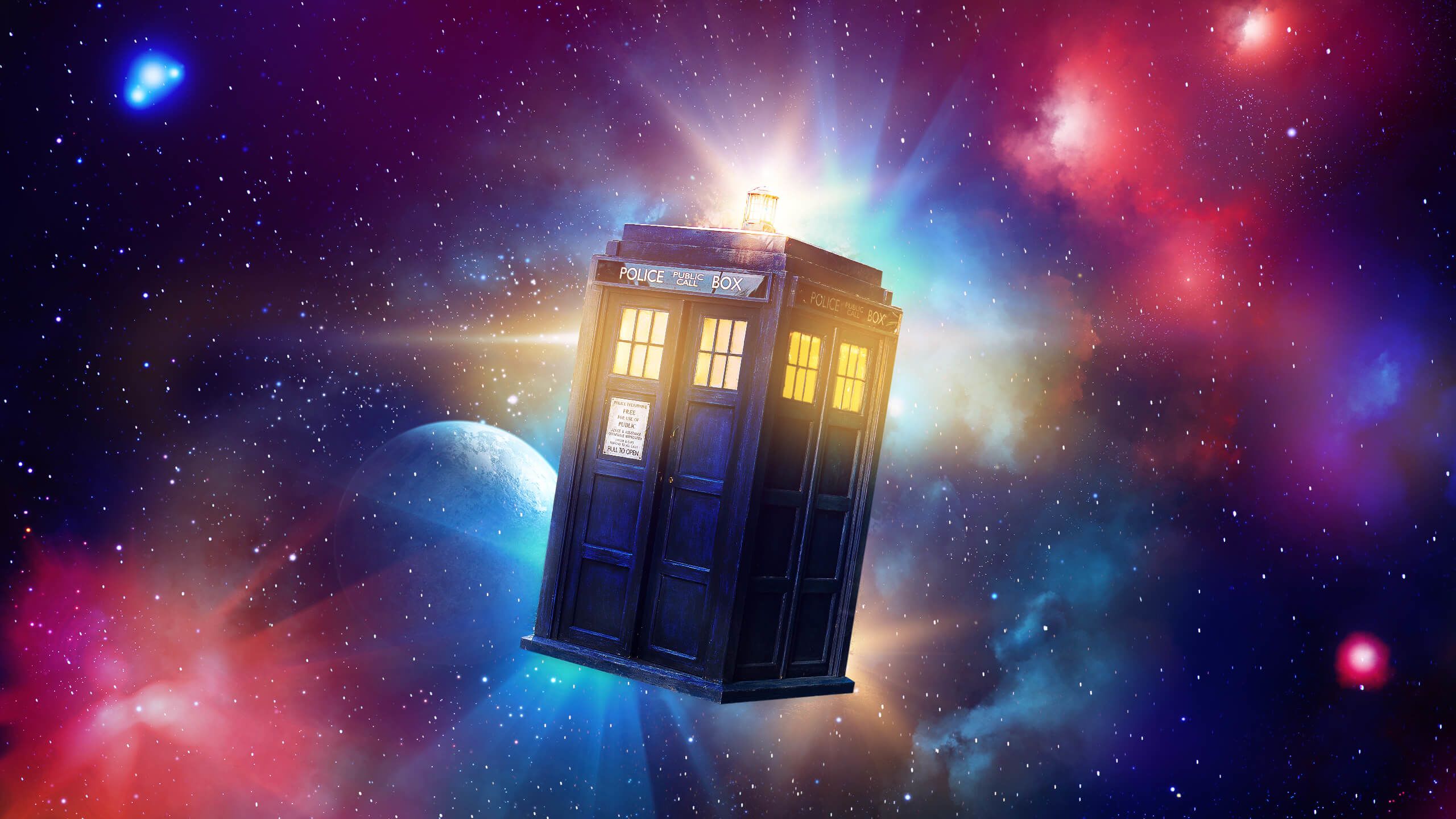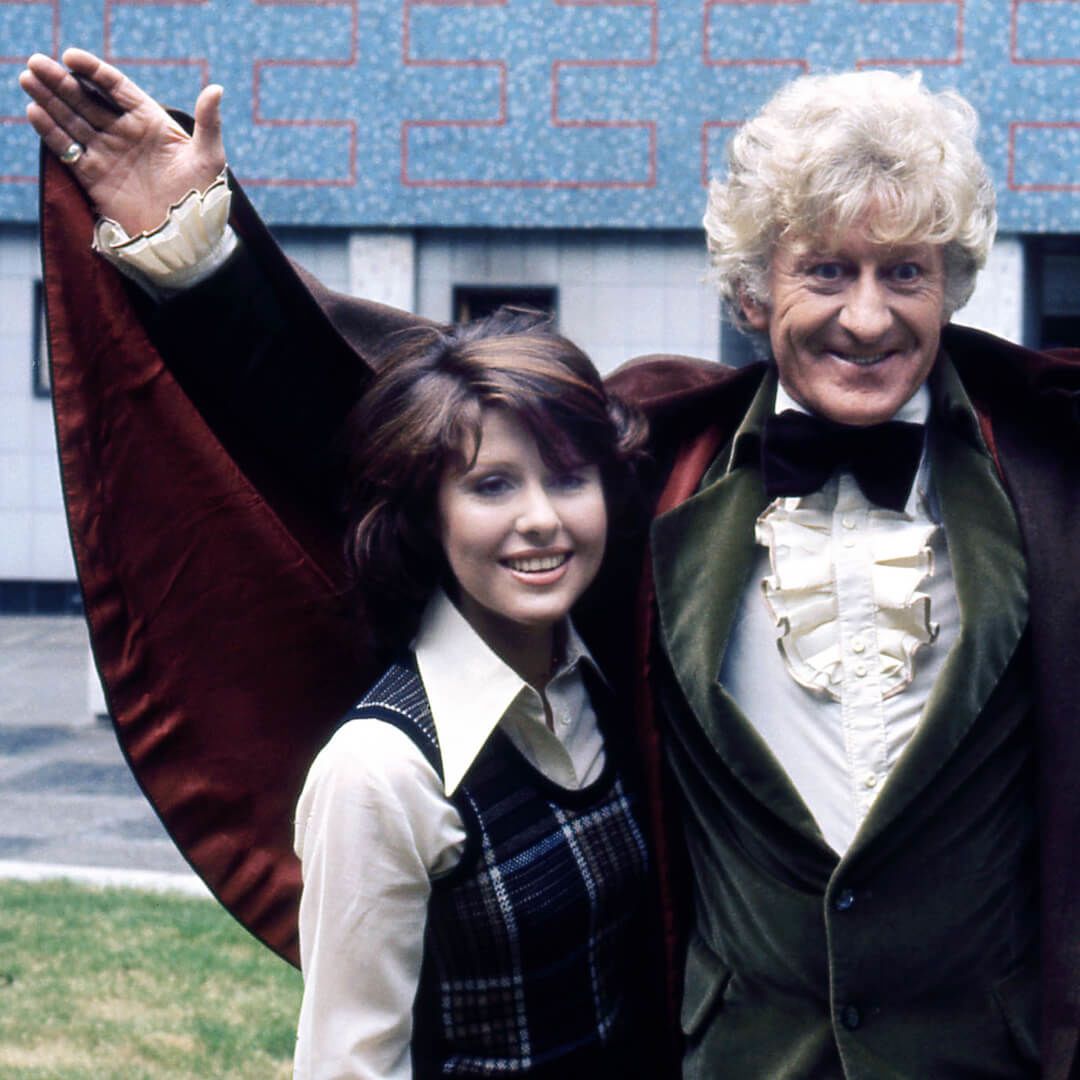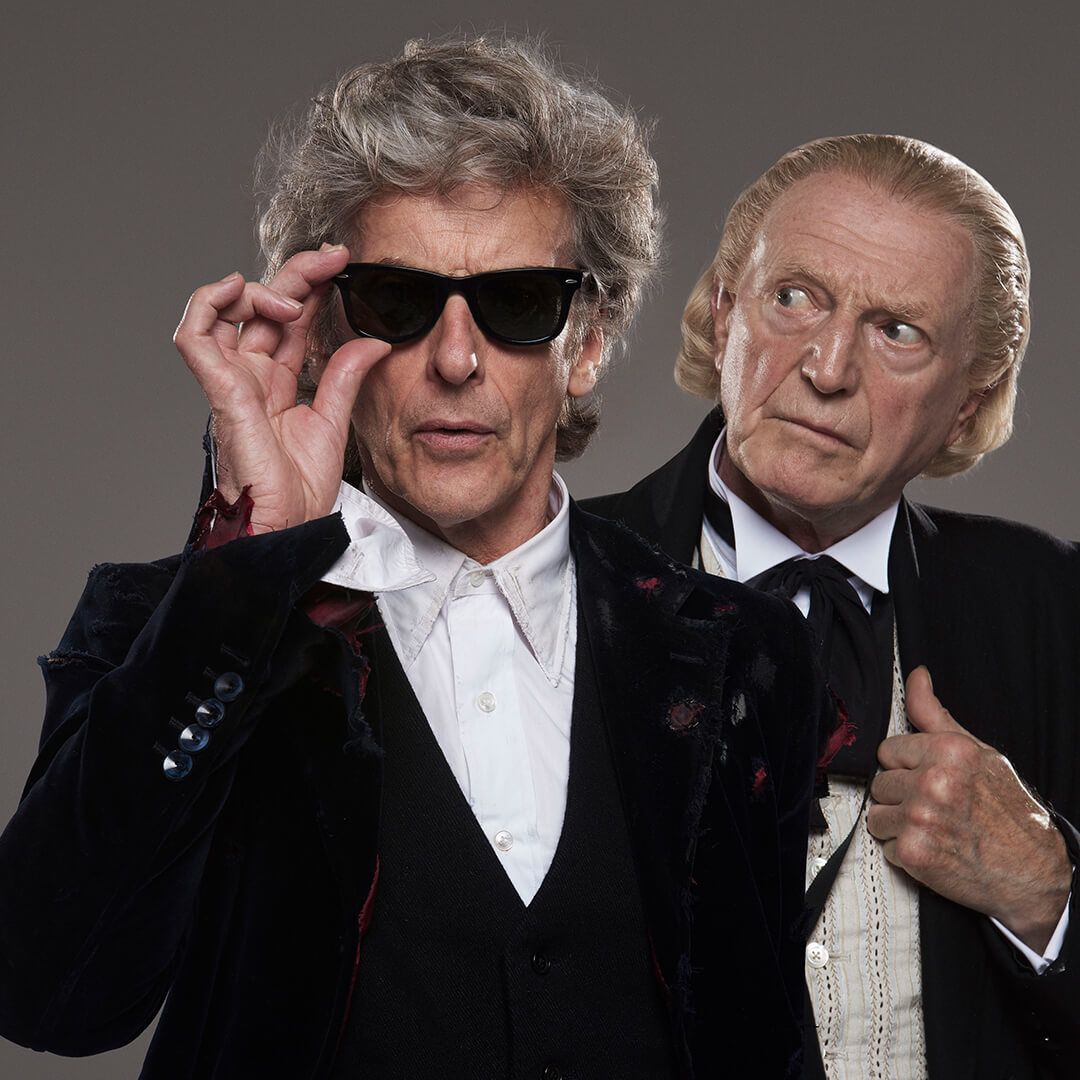The changing face of Doctor Who

Over the last 60 years, the Doctor has been played by many different actors, and changed seemingly beyond recognition.
Events on screen and off have shaped the character’s personality, their face changing to reflect Britain itself, and every version building on what has gone before. To truly understand Who, you have to know your history.
Now, with David Tennant returning to the role and Ncuti Gatwa waiting to take over the Tardis, it’s time to ask: who exactly is the Doctor?
William Hartnell
(1963-1966)
The first Doctor, played by William Hartnell, did not start out as the friendliest. At one point in his first story, he wanted to bash a caveman’s head in with a rock.
Stern and patrician, he travelled the galaxy in his Tardis (Time and Relative Dimensions in Space) with his granddaughter Susan (Carole Ann Ford) and two school teachers. After all, the series was originally intended to teach children history as much as thrill them. Yet over time he warmed up, eventually becoming, in Hartnell’s words, "a cross between the Wizard of Oz and Father Christmas".

William Hartnell’s Doctor; Barbara Wright (Jacqueline Hill); Ian Chesterton (William Russell); and Susan Foreman (Carole Ann Ford) land on the Dalek home planet. Credit: BBC
William Hartnell’s Doctor; Barbara Wright (Jacqueline Hill); Ian Chesterton (William Russell); and Susan Foreman (Carole Ann Ford) land on the Dalek home planet. Credit: BBC
Despite the Doctor’s Edwardian frock coat, many of his baddies reflected technological fears of the time. The Cybermen - humans who had replaced much of themselves with metal – were inspired by advancing medical technology. And the Daleks were shouty miniaturised tanks, terrifying to a nation that had lived through World War 2.
Patrick Troughton
(1966-1969)
Regeneration: the miracle of Time Lords that let them change their bodies after dying, and let the show survive for decades with new lead actors. When Hartnell’s Doctor fell in a conflict with the Cybermen, Patrick Troughton sprang up with a new childish energy. He wore fuddy-duddy braces, baggy trousers and the occasional stove pipe hat. He played the recorder. The Doctor was no longer a school teacher: he was a playmate.

Luckily the Doctor (Patrick Troughton) did not play the iconic theme tune on his recorder. Credit: BBC
Luckily the Doctor (Patrick Troughton) did not play the iconic theme tune on his recorder. Credit: BBC
Not that it was all fun and games. Show creator Sydney Newman had originally banned "bug-eyed monsters" from the series. The popularity of the Daleks had exterminated this rule, and Troughton faced off with his share of slimy beasties, from giant crabs to robot yeti. Children now regularly watched the show in terror from behind the sofa.
Jon Pertwee
(1970-1974)
Jon Pertwee had been an intelligence officer in World War 2, working alongside James Bond author Ian Fleming. The first Doctor shot in colour, he played the role as a debonaire, exciting action hero.
The Doctor was now handy in a fight, a master of "Venusian aikido". He drove a cool car, which Pertwee named the Whomobile. And most importantly, he rocked a cape and a ruff, which even Bond would have struggled to pull off.

Jon Pertwee and Elisabeth Sladen, who played Sarah Jane Smith, pose at BBC Television Centre. Credit: BBC
Jon Pertwee and Elisabeth Sladen, who played Sarah Jane Smith, pose at BBC Television Centre. Credit: BBC
Beyond the companions he travelled with like journalist Sarah Jane Smith (Elisabeth Sladen), the Doctor found a new supporting cast, including the stalwart Brigadier Lethbridge-Stewart (Nicholas Courtney) and his Time Lord nemesis, the Master. Played by the equally suave Roger Delgado, he was the Doctor’s intellectual fencing partner, a dark mirror.
Tom Baker
(1974-1981)
“Would you like a jelly baby?”
With a tenure almost as long as the scarf he wore, for many Tom Baker is still the definitive Doctor. He had been a monk in his early 20s, and brought a gothic twinkle to the role: a new, surreal sense of humour, along with a robot dog.
Television and the audience had changed in the time Doctor Who had been on. Female companions like Sarah Jane, warrior Leela (Louise Jameson) and fellow Time Lord Romana now did more than scream and need rescuing.

Tom Baker and Lalla Ward, who played the second regeneration of Romana, surrender to the Daleks. Credit: BBC
Tom Baker and Lalla Ward, who played the second regeneration of Romana, surrender to the Daleks. Credit: BBC
Scripts by the likes of Douglas Adams (who wrote The Hitchhiker's Guide to the Galaxy) leaned into the show’s inherent strangeness. Perhaps tellingly, Baker started less than a month after the final episode of Monty Python’s Flying Circus aired. The Doctor travelled back to meet Davros, the creator of the Daleks, while aliens ran complicated ploys to create copies of the Mona Lisa, turning it into a sort of NFT with time travel. Jokes and “timey-wimey” plots (to quote Tennant’s Doctor) had become key elements.
Peter Davison
(1982-1984)
Aged 30 when he first stepped into the Tardis, Peter Davison was at that point the youngest to take over the role. In many ways he was an aspirational figure for the 1980s. He wore cricket jumpers (albeit with an eccentric stalk of celery as a brooch) and at one point flew Concorde back to the Jurassic era.

Peter Davison in costume, minus the stick of celery he wore on his lapel. Credit: BBC
Peter Davison in costume, minus the stick of celery he wore on his lapel. Credit: BBC
Although seemingly laid-back and able to hit a quick six, he also had to deal with his share of sticky wickets. He was forced to watch his companion Adric (Matthew Waterhouse) die in a battle with the Cybermen and his final story, the Caves of Androzani, is widely recognised as one of the series’ most heavy and emotional. The seemingly young man with an old heart (or hearts, in his case) coping with pain and trauma would inspire many later Doctors.
Colin Baker
(1984-1986)
The deck was stacked against Colin Baker from the start. Immediately trying to strangle his companion Peri (Nicola Bryant) in a post-regeneration mania wasn’t an endearing introduction. For his costume, Baker wanted a cool leather jacket, much like Christopher Eccleston would later wear. What he got was more…colourful. Worst of all, the Doctor had made his most powerful enemy yet.
Michael Grade, the then controller of BBC One, loathed the show, believing it to be violent and made “for a few pointy-head Doctor Who fans”. It was even put on hiatus for 18 months.

Colin Baker chooses his much maligned colourful jacket from the Tardis wardrobe. Credit: BBC
Colin Baker chooses his much maligned colourful jacket from the Tardis wardrobe. Credit: BBC
Appropriately, some of the best episodes came when the hero went up against Gallifreyan bureaucracy. In one story he appeared in front of the Time Lord equivalent of an industrial tribunal for his recklessness. That story’s ultimate villain the Valeyard - a possible future, evil incarnation of the Doctor himself - suggested yet-unseen versions of the Time Lord, a rich seam for later stories.
Sylvester McCoy
(1987-1989)
Like Troughton, Sylvester McCoy was silly on the outside - at one point he does a stage magic routine – but also emphasised the Doctor’s more sinister aspects. “Instead of going for the obvious that he's little and funny,” future showrunner Steven Moffat explained, “he goes for mysterious and dark and wise and terribly sad.”
But there were more fights in the real world. With public concern about "video nasties" – uncensored films being on tape – Doctor Who was accused of gratuitous violence. Plus, a thinly veiled parody of the prime minister didn’t help claims it had a left-wing slant. McCoy later admitted to the Sunday Times: “Our feeling was that Margaret Thatcher was far more terrifying than any monster the Doctor had encountered.”

Sylvester McCoy’s Doctor hid a more melancholy side beneath his happy exterior. Credit: BBC
Sylvester McCoy’s Doctor hid a more melancholy side beneath his happy exterior. Credit: BBC
There were high points. The streetwise, headstrong Ace (Sophie Aldred), who took on Daleks with a baseball bat, was a prototype for later companions. But the Doctor’s time was running out. In 1989, it went off air, possibly never to return.
Paul McGann
(1996)
Doctor Who: The (Television) Movie was intended to test the waters for a revived series with a bigger budget, co-produced with an American studio and starring Paul McGann. Some of the changes were controversial: the Doctor was revealed to be half-human, and shared his first kiss with a companion, Dr Grace Holloway (Daphne Ashbrook).

Paul McGann and Daphne Ashbrook in the cathedral-like Tardis. Credit: BBC
Paul McGann and Daphne Ashbrook in the cathedral-like Tardis. Credit: BBC
McGann later revealed he had signed a contract for six years, should the pilot have been picked up. It wasn’t. However, his Doctor got his due by appearing in the developing Doctor Who multimedia empire, years before the age of streaming and interconnected universes such as Marvel. New novels and audio dramas starring old cast members kept the franchise alive for fans and many people who would go on to work on the show started out here.
Interestingly, the new specials and series involve Marvel-owner Disney, who will stream it outside the UK and Ireland, in turn helping boost the budget.
Christopher Eccleston
(2005)
Not just a regeneration, but a reboot. Under show boss Russell T Davies, the new Doctor was a manic best mate to new companion Rose (Billie Piper), prone to shouting “Fantastic!” However, he was now also a traumatised survivor of a war that had wiped out the Time Lords, and with them, decades of complicated backstory that might put off new viewers.

The Doctor (Christopher Eccleston), Rose Tyler (Billie Piper) and the start of a new era for Doctor Who. Credit: BBC
The Doctor (Christopher Eccleston), Rose Tyler (Billie Piper) and the start of a new era for Doctor Who. Credit: BBC
Pacy and with a significantly better budget, this was a new era. While the Daleks still hated the Doctor as much as ever, at least one former enemy was converted. “Congratulations to all involved in Doctor Who,” Michael Grade wrote to Director General Mark Thompson. Rather than an embarrassment to the BBC, New Who was now a "classy, popular triumph".
"PS Never dreamed I would ever write this. Must be going soft!"
David Tennant
(2005-2010)
With Eccleston serving only one series in the Tardis, David Tennant's tenure was when the show gained a new worldwide following. Old-favourite villains including the Cybermen returned - as did The Master. Once again a reflection of the Doctor, he was played by John Simm as a whirlwind of quips. New classics were introduced, including the Weeping Angels – killer statues that only move when you’re not looking.
Before Who, David Tennant had played the lothario Casanova in an adaptation by Russell T Davies. Going further than the occasional smooches with companions, his Doctor was a romantic hero. His relationship with Rose was a tragic love story, and subsequent companions like Martha Jones (Freema Agyeman) pined for him too. A notable exception was Donna Noble (Catherine Tate) who returns for this year’s specials.

The Doctor (David Tennant) and an Ood, one of the new series’ recurring monsters, and sometimes friends. Credit: BBC
The Doctor (David Tennant) and an Ood, one of the new series’ recurring monsters, and sometimes friends. Credit: BBC
Even the Doctor seemed a bit too into himself, having trouble letting go of this face. At one point a Dalek finally gets to shoot the Time Lord, only for him to regenerate without changing appearance. As a later version noted, “I had vanity issues at the time.”
As the new specials prove, he might not have got over them.
Matt Smith
(2010-2013)
At 26, Matt Smith was younger than Davison, although he wore a bow tie that even Troughton’s Doctor might have thought was old-fashioned. His stories were often dark fairy tales that centred on emotion, rather than hard science. Companions Amy Pond (Karen Gillan), Rory Williams (Arthur Darvill), Clara Oswald (Jenna Coleman) and his wife River Song (Alex Kingston) all had stories that stretched across several timelines and lifetimes. He was the perfect Doctor for the age of online "fandoms", turning favourite moments into memes and writing fanfiction.

The Doctor (Matt Smith, centre) and companions Rory Williams (Arthur Darvill) and Amy Pond (Karen Gillan). Credit: BBC
The Doctor (Matt Smith, centre) and companions Rory Williams (Arthur Darvill) and Amy Pond (Karen Gillan). Credit: BBC
In fact, new showrunner Steven Moffat had previously written for Doctor Who books, and his first television "episode" was The Curse of Fatal Death: a sketch for Comic Relief in 1999, starring Rowan Atkinson. Perhaps the most shocking revelation of his tenure was a hitherto unseen, past version of the Doctor, played by John Hurt. Other writers would take this idea and run with it.
Peter Capaldi
(2014-2017)
As a child, Peter Capaldi regularly wrote to the Doctor Who staff with notes, and in 1972 demanded to be made president of the fan club. His request was denied, and secretary Sarah Newman once hoped that “the Daleks or someone would exterminate him”. They finally had their chance.
Like Hartnell, Capaldi’s Doctor started off foreboding but eventually loosened up, playing electric guitar and wearing "sonic sunglasses" indoors in some sort of Gallifreyan mid-life crisis. Yet his tenure wasn’t about backwards facing nostalgia.

Peter Capaldi’s Doctor met the original model, this time played by David Bradley rather than William Hartnell. Credit: BBC
Peter Capaldi’s Doctor met the original model, this time played by David Bradley rather than William Hartnell. Credit: BBC
Amid an increasing focus on gender and media representation, the Master returned. However, this time the character called herself Missy, played by Michelle Gomez as a nightmarish Mary Poppins. She firmly established that regeneration could involve more than just a change in face and clothes.
Jodie Whittaker
(2018-2022)
Enter Jodie Whittaker. The first female Doctor was obviously a new development for the show, but her most interesting moments came in looking back. With the Tardis packed with companions, educational stories returned, explaining the American civil rights movement and the partition of India. Whereas Hartnell had been a strict lecturer, Whittaker was the enthusiastic teacher at the head of the classroom. "I was allowed every twitch and fidget that I usually have to rein in,” she recently told Radio Times magazine.

The Doctor (Jodie Whittaker) and the “Fugitive” Doctor (Jo Martin). Credit: BBC/Ben Blackall
The Doctor (Jodie Whittaker) and the “Fugitive” Doctor (Jo Martin). Credit: BBC/Ben Blackall
Picking up hints that had been dropped all the way back to Tom Baker, new showrunner Chris Chibnall revealed another previously unseen Doctor, played by Jo Martin. More than that, she had apparently lived countless more lifetimes of which she had no memory. The fandom, now used to picking apart every detail of Who history on social media and in YouTube theory videos, was set ablaze. And more was to come when she regenerated.
The future
Guess who? The surprise return of David Tennant for three specials this year is not the only comeback. He will be joined by his old companion Catherine Tate and, behind the scenes, former showrunner Russell T Davies.
Quite how and why the Doctor has slipped into his old skin is a mystery viewers will have to find out. As Tennant told the BBC’s Lizo Mzimba, "To get to return to something that meant so much 15 years ago, and was such a huge part of my life, was something I never really imagined was likely." Yet as we’ve seen, the pieces had been put in place over the past 60 years.
Then in 2024, an entirely new face takes over: Ncuti Gatwa, best known for the Netflix comedy-drama Sex Education. What sort of Doctor will he be? What will he take from the past, and add to the role? Only time will tell.
Credits
Words: Jonathan Holmes and Text Formats
Design: Jenny Law, Andrew Harris, Oli Powell
Lead image credits: BBC Studios/ Bad Wolf/ Getty Images/ BBC